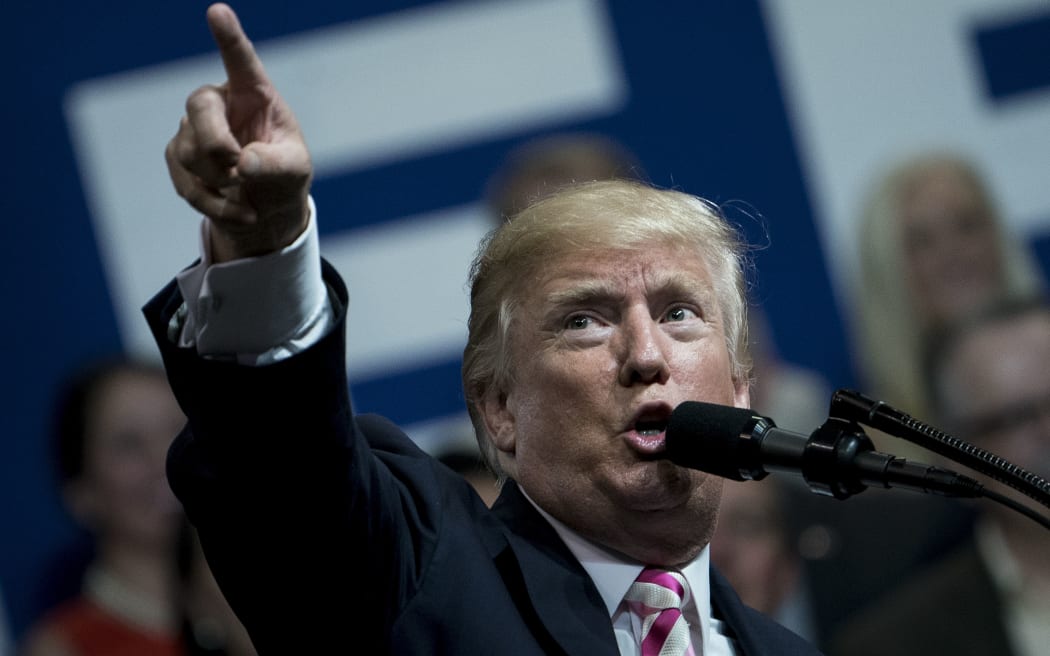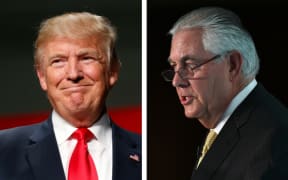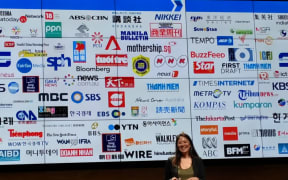By Joseph Kahn*
President Donald Trump continues to attack the media, but high-quality reporting continues to have value in the age of "fake news" and empathy is the key, argues New York Times managing editor Joseph Kahn.

President Donald Trump has used the idea of 'fake news' to create distrust of media reports he doesn't agree with. Photo: AFP
We are not yet close to seeing the end of the upheaval and disruption of legacy news providers by new media and tech platforms. But now we're confronted with another threat.
An American president and his close allies who treat reporters as "enemies of the people" - with no attribution to Stalin or Mao.
Mr Trump expresses aggressive hostility to all but a handful of political websites or conservative TV personalities who praise him, and labels everything else "fake news".
What is going on is an assault - a political assault and technocratic assault - on good journalism. And if we're going to confront it, we have to start to be clearer about what the media does and why it matters. What they do and why it matters. And how we're going to address it.
Don't fall for fake fakes
The good news is that much of the concern about "fake news" is, to put a fine point on it, fake.
Mr Trump seized on rising alarm about actual fake news circulating on the internet, some of which clearly benefited his own candidacy, and turned it into a campaign against reliable providers of real news.
It is a strategy that comes directly from the pages of Orwell or Kafka. And some surveys suggest that to some extent it has worked.
Fake news, factually speaking, is a specific and clearly identifiable thing. It is a piece of content that takes the form of a news story but has little or no basis in reported fact. It is created by someone fully aware of its lack of factual basis with the express purpose of going viral, either to achieve some political or social purpose or to earn money for the author. Or both.
We've all seen real fake news, and it is a big problem. "Pope Francis Shocks World, Endorses Donald Trump for President," was shared nearly a million times on Facebook. "WikiLeaks Confirms Hillary Sold Weapons to ISIS" was shared nearly 800,000 times. They are actual examples of fake news.
Fake isn't the only flaw
There are lots of other problems in the news media that have nothing to do with news being fake. News stories that contain information that turns out to be inaccurate are flawed, not fake. News stories documenting developments or events that later get overtaken by other developments and events do not become "fake", even if they no longer fully describe the situation they were originally created to describe.
Fake news is also not news or analysis or opinion or data that you - or the President - do not agree with.
Partisan news outlets and the networks of friends and preferred providers Facebook helps people construct for themselves can of course create a filter bubble. And that bubble can simulate a full enough sampling of what's really happening in the world such that people may come to regard anything else as fake.
But fake is not a synonym for unfamiliar or nonconforming.
We see a lot of spin
Fake news is a cousin of heavy spin, or what Kellyanne Conway, one of Mr Trump's advisers, has called "alternative facts". But really we're all accustomed to spin - press releases, propaganda, and dubious statements from spokespeople are not new inventions.
Properly identified and contextualised spin is part of the regular ecosystem of the connected world from which the news, in part, is constructed. It should not be a cause for panic.
The first big step in confronting the malady of "fake news" is to stop promoting the idea news, properly understood, is often fake. Viral content fraudulently concocted to look like news is clearly a problem. One that governments conducting elections and technology platforms that allow mass sharing of content need to better address. It is also worthy of more proactive journalistic effort to investigate and understand, something we've been doing much more of at The New York Times.
But fake news is not a variation on news any more than hacking is a variation on web browsing. And emphasising that - rather than acquiescing to the false notion the news industry is riddled with fakes - is a necessary step, if only a first step, in rebuilding public confidence in what our journalists do. That is to thoroughly report, contextualise, and fairly present the news.
High-quality news counts
Real, high-quality news not only continues to have value, but has a great deal more value at a time when dominant technology platforms and the American President regularly blur fact and fiction.
In this political climate, there is tremendous pressure on The New York Times to become part of the opposition to Mr Trump. That pressure comes partly from some of our own readers. They want us to more forcefully confront a president they see as a threat to democracy and American power.
The other side also wants us to become the opposition. That would suit their narrative that there is no such thing as nonpartisan media or nonpartisan facts, only support for or opposition to their positions.
Some media companies see it as in their journalistic or business interest to more formally take sides in this struggle.
At The New York Times, we have decided it is not in our journalistic or business interest to do that. We're convinced there is still a big audience for nonpartisan journalism, in the United States and around the world, and that the polarisation of much of the media makes that potential audience larger.
Moreover, we see partisanship as the enemy of good journalistic practice. The discipline of scepticism, scepticism even about many of the things our own journalists might take for granted, leads to better stories. It forces us to listen more carefully. It makes us more aware of changes in culture and society.
The key word is empathy. Empathy means considering perspectives other than your own. It is a fundamentally human value that helps us - and ultimately our readers - to become smarter and more understanding. It also makes for compelling journalism.
* Joseph Kahn is managing editor of The New York Times. This is an excerpt from his Andrew Olle Media Lecture, which was given in Sydney on Friday night.
- ABC




